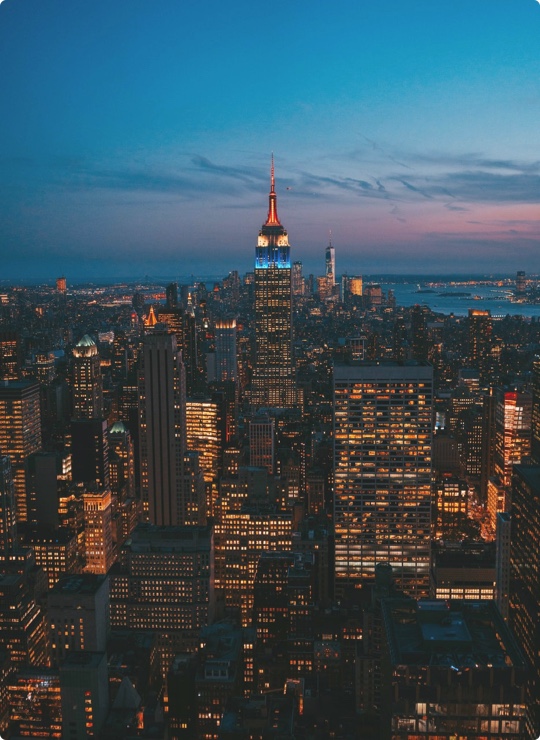| NOTE: This is an informational skeleton that describes the structure to use when creating articles about huge stations. Editing this template will not create a new article; for information on how to create new articles see Project:How to start a new page. |
This template describes the preferred formatting to use when creating an article about huge stations that meet the criteria for a standalone article.
To quickly insert a complete blank station template, copy the quick version into the edit box on the page you are editing.
Stuff in italics below is editorial comment, with suggestions for what should go in each section. You should plan on ruthlessly eliminating if you copy this code to a new station article.
Once you have created a new station article, please add it to the list at Station articles
The first section of the station article does not have a heading. This is a where you give a quick descriptive overview of the station. Be sure to include some context so readers know where and what they are reading about. Links to the region that the station is in can be useful here, too.
Understand
[edit]General information about the station's history, location, or other useful background
Services
[edit]Information about routes, operators, check in, and baggage collection.
If not already covered in Understand, explain the layout of the station. If necessary, list which routes or operators are at which buildings or platforms. (Unlike Wikipedia, there is no benefit to giving travellers a complete list of operators if they don't need it. Signage at stations will tell most travellers what they need to know anyway.)
Describe what to do for departures: check in, security screening. Only give information outside the norm, such as slow lines, long walks, or multiple security checkpoints that all lead to the same area.
Describe what to do for arrivals: baggage claim, immigration, customs. Only give information outside the norm, such as slow lines, unusual procedures, multiple baggage claim areas, etc.
Local transportation
[edit]Getting to/from the station: taxis, rental cars, etc. For train stations, add buses, and vice versa. If there are many options, it may be helpful to start with a brief overview of which ones are the best (fastest, cheapest, or easiest) or most common.
Below are some sections for common ways to get to a station. Try to order the sections from the most common and convenient to the rarest and most inconvenient. If for some reason there's a common way to approach the station not listed below – by llama, by snowmobile, by catapult – just add another section. And leave out sections that don't apply.
Look at the city article for the station's city. You should probably use the same or similar sections as the city article for consistency.
It's probably helpful to include a "{{See also}}" link to the city's "Get around" section.
By train
[edit]If it is a train station, or if there is no rail service to the station, leave this section out.
Depending on the city article, this might be renamed "By public transit", "By subway", etc.
How to find the station. What are options for getting to the city (or nearby major cities). How much does each one cost, how long does it take. Where/how to buy tickets. Where/how to transfer to other lines or forms of transportation.
By bus
[edit]If it is a bus station, or if there is no bus service to the station, leave this section out.
Give routes and schedules of buses that stop at the station, and where they connect to. Note the location of the bus station.
This may also include long-distance bus service to other cities (possibly in a sub-section) and shuttle buses or vans from nearby hotels (possibly in a sub-section or their own section).
By taxi
[edit]Where to find taxis. How much do they cost, and is there a fixed rate to certain districts of the city.
This may also include limousines, ridesharing (e.g. Uber and Lyft), and shared-ride shuttle vans.
By car
[edit]Driving details and directions for getting to the station. Distances and times from major districts of the city (or from nearby cities that this station serves) can be helpful.
Give options for where to park your car, how much it will cost, and how to get to the station from the parking lot (other than on foot). This is also a good place to mention details for picking up or dropping off passengers, such as traffic or free parking areas for waiting or quickly dropping off.
By rental car
[edit]This might be a subsection of "By car" or its own section.
Give directions to get to rental car companies (and from there to the cars, if they're not adjacent). In the unlikely case that there are no rental car companies at the station, give listings and directions to some that are nearby or that are easy to access from other transportation (e.g. train).
Give driving details and directions for returning rental cars. Include places for fuel along the way.
Don't list rental car companies if it's just the national chains. Only list them if there are very few to choose from (unlikely at any station large enough to merit its own article), or if there are unusual ones (e.g. exotic cars, motorcycles, etc.).
Get around
[edit]How to get around the station once you are there: train, bus, moving sidewalk, on foot, etc. How long will it take. It might be helpful to review or give more details about the station's layout.
This should explain how to get to/from a terminal (after you enter security, or when you arrive) as well as how to get between terminals (if you're connecting). Warn when it's necessary to exit security and re-enter. Warn if there are any long stretches of walking, delays in the train, etc.
Wait
[edit]What to do between train/bus journeys. Station lounges, exhibits, music, art, amenities, spas, massage chairs, etc.? Where are good windows for looking at scenery or train/bus spotting? Where can you escape the hustle and bustle: quiet corners, gardens, etc.? Are there play areas for kids?
This section may be divided into subsections as needed.
Eat and drink
[edit]Food and beverage options at the station. Mention any local specialties or oddities. If there are standout restaurants worth seeking out, call them out in the overview to give readers a few quick suggestions. Be sure to include places for a good cup of coffee.
Unlike most city and district articles, it's usually better to group listings here by location rather than price. Station travellers often have limited time and can't trek halfway across the station for a bite. (And if they do have enough time, they can simply read all the listings.)
Don't put the mailing address in listings; give a sensible description such as "Building 2" or "Platform 4A" in either the "address" or "directions" field.
Note restaurants that are outside secure zones. Point out parts of the station that don't have good food options, and suggest where to go instead (if you end up there during a connection). Suggest where to get food in the middle of the night (restaurants open late or 24/7, or where to go outside the station if possible).
Buy
[edit]Shopping options at the station. Include currency exchange, ATMs, and other ways to get money. Where can travellers find common airplane travel items: newspapers, magazines, books, snacks, batteries, blankets, pillows, headphones/earbuds, toiletries, etc. Are there places to get souvenirs or local specialties. Mention duty free shops.
This section may be divided into subsections as needed.
Connect
[edit]Internet, post, phone, and other means of staying in touch with the outside world. Charging stations, wall outlets, etc.
Cope
[edit]Services available for the traveller: luggage storage, lost and found, chapels, information desks, showers, family/companion toilets, places to breastfeed, dog parks, pet relief areas, clinics, pharmacies, etc.
Sleep
[edit]Where can you sleep/nap/rest inside the station, including on chairs and benches. How comfortable will you be, and will you get in trouble if you stretch out or stay too long.
Hotel options on or connected to the station, and an overview of nearby neighborhoods offering hotel accommodation. If the station is adjacent to a well-defined neighborhood and travellers can easily find hotels from that district article, link to it. However, stations are often not close to anything, and the station article may be the best place to list a few hotels (ones whose defining feature is "being close to the station").
Stay safe
[edit]Optional.
This is a section for general safety tips. If there are crime problems, legal issues (such as strict laws on drug trafficking) in the station, list them here.
Nearby
[edit]Options for those with long layovers to leave the station.


 Français
Français Italiano
Italiano


